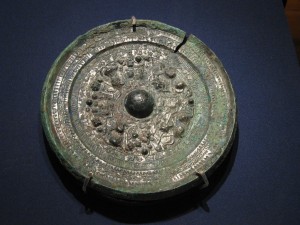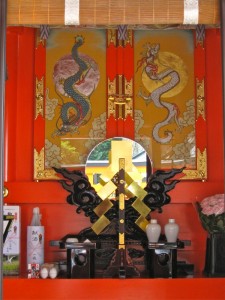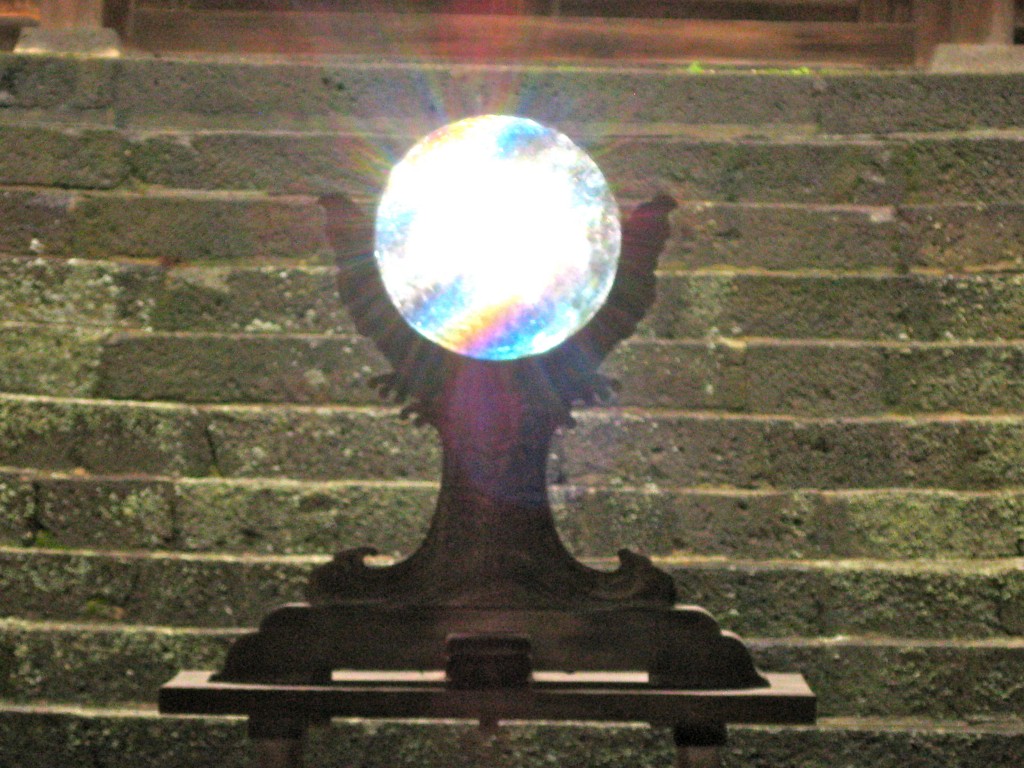
The bronze mirror of antiquity was a precious and sacred object. Here the carved back is seen, the other side being carefully polished so as to reflect clearly.
The mirror is Shinto’s most precious object, because in times past it was held to contain a person’s soul. It is why Amaterasu handed over a mirror to her descendants as the most prestigious object of reverence, for within its reflecting surface was captured the spirit of the sun goddess herself.
In traditional African culture and spirituality the image of the circle is a prominent feature that permeates all departments of life. In essence, the circle represents completeness, fullness. It is the primal source of energy and wisdom. The circle is thus an image of what is named God – that which is the source of all things and continues to give birth to new possibilities thereby offering hope. The association of God with the circle (or vice versa) explains why many life forms, ceremonies, rituals, buildings in traditional African culture follow the shape of a circle. Now I will try to illustrate why these circular formations are prominent in African culture and tradition.

Life is sacred because life and creation manifest God. Therefore life and creation are places of encounter with God. And so, the circular shapes that rituals, buildings and certain life forms follow manifest divinity, sacredness, unity, completeness, inter-connectedness and fullness. For example, the circular shape of the rondavel is meant to align the homestead with the Creator and the fullness of life. The shape of the rondavel has deep-seated religious and spiritual connotations. The rondavel represents the origins of creation and the unity of life. It is a symbol of safety and fullness of life.
Similarly, dance gives expression to a deep relationship with the Creator or represents a relationship with the Divine Spirit. In traditional African culture most forms of dance follow the shape of a circle. For example, isangoma (the diviner) uses a circular dance when performing acts of divination. Whilst divination is intended to cure life’s illness and restore wholeness, its performance enacts the wholeness of life and gives visible expression to how life is like when lived in its fullness. For example, participants in the ceremony of divination sit in a circle singing and clapping.
Many other creations and rituals are circular. For example, men and women in a rural village sit in a circle, drinking home brew beer out of circular utensils, and circulate the utensils among themselves. Abakhwetha (initiates at the circumcision school), during their period of separation, live in round shaped structures (ibhuma) which symbolise their birth into new life through their passage from boyhood to manhood.
And so, a circle symbolises birth into new life, completeness which is associated with the Creator. The circle is also a symbol of inclusion and interconnectedness with all creation. When people meet in a circle, everyone occupies a front-seat. In a circle everything is interconnected.

The circular Shinto mirror that ends where it begins

Leave a Reply